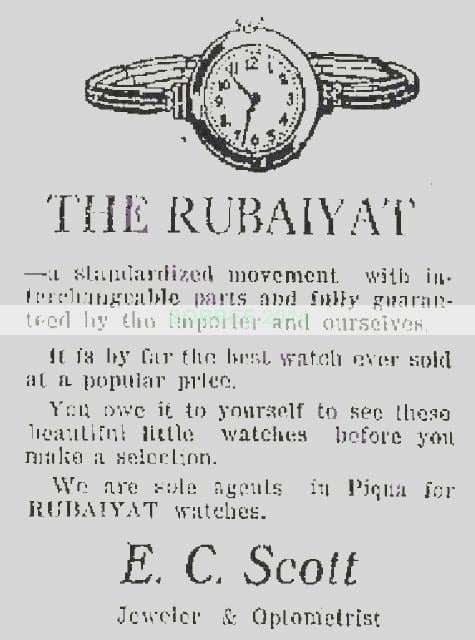Hi all,
Here's a fun one. I picked it up recently on eBay with a winning bid of only $20.50 and its keeping good time. I've gotten my money's worth just having fun researching and puzzling over it... I wanted to add it to the database for reference since I don't see much as far as old Rubaiyats and I also wanted to see what folks thought about it.
Its a very early Rubaiyat, possibly as early as 1917. I've read both Mark's fine article "Retracing Bulova History" and the information on LIsa's site about early Bulovas. This likely was made not too long after Bulova got the Rubaiyat trademark registered in May, 1917. It could even be earlier (Reverand Bob noted a listing for Rubaiyat dating to November, 1916 in Biel Switzerland by J. Bulova & Cie, Mark found a 1948 document that said the Rubaiyat trademark had been in use by Bulova since November 1916, and Will Smith posted about a 1917 Jewelers Circular Weekly that claimed use of Rubaiyat by Bulova dating back to November 1, 1916). BTW, great stuff in Mark's article and the accompanying comments and discussion...
Anyway, I found this watch interesting for several reasons. First, the case is marked "American Standard W.C. Co", so it presumably predates Bulova's acquisition of the American Standard company. It seems similar to the makings on the case of the Rubaiyat pocket watch posted by Mark in the discussion after his article. No globe or shield marking on the case, and the case number starts with "2", which would date it to 1917 under Lisa's list of characteristics for 1917 watches. I also noted that Will Smith's article "American Standard Cases Revisited C1919 through c1924 & later" included a Patent Office document that indicated that American Standard had been in use since August 1, 1918, but I assume that's when Bulova started to use it. Also, Lisa theorizes that the "American Standard W.C. Co" signiture pre-dates Bulvoa's ownership of American Standard, so perhaps this watch is either 1917, or early 1918 (before August 1, 1918)?
What is puzzling is that the watch has the crown at 3:00, not 12:00, so it doesn't square with LIsa's listing of characteristics that date a watch to 1917. Does that also point to early 1918?
As you can see in the photo, the movement is marked "Rubaiyat", not "Rubaiyat W. Co.". Also, there is no caliber or other markings on the movement other than "15 JLS" and "3ADJ". Rubaiyat is also on the dial. In any event, a very early Bulova...
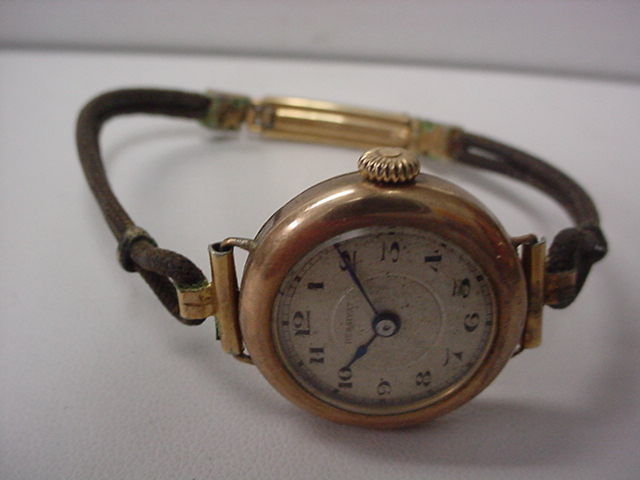
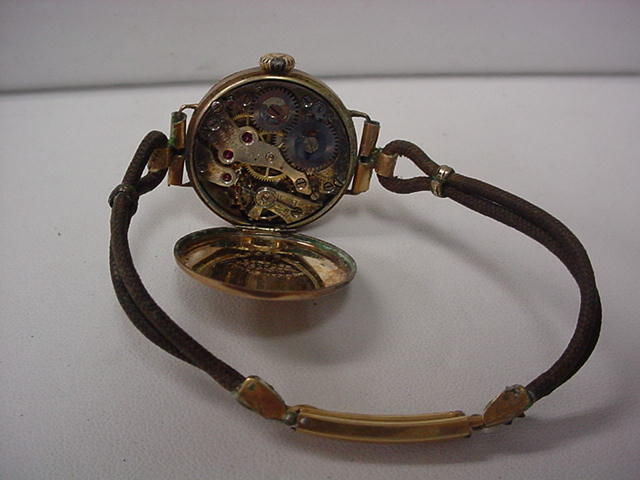

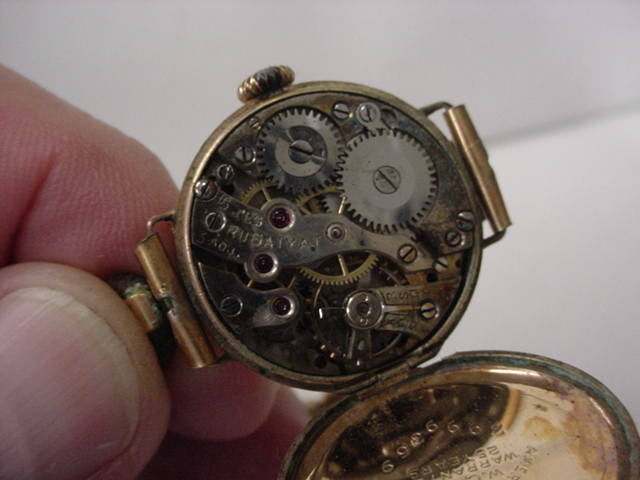
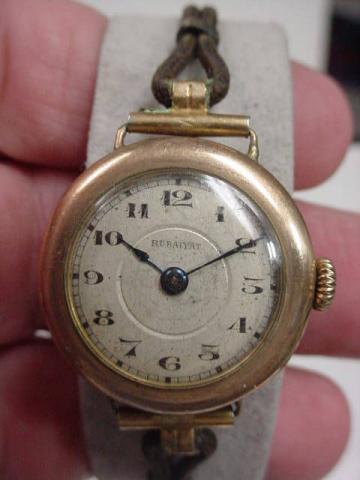
Gut tells me this was manufactured right at the very beginning of Bulova's involvement with ASWCCo. with them possibly deciding to drop the WC Co. part for ease of simplicity, cost or some other reason and just using American Standard.
So unless we have evidence to the contrary I'd date this as 1920.
There is no co-signing on the movement like we have a seen on other early Bulova produced watches.
In reply to Gut tells me this was by mybulova_admin
The first wristwatch was made by Patek, specifically for Hungarian Countess Koscowicz in 1868. Girard Perregaux made large numbers of men's wristwatches in 1880's for the German Military. Men were slow to accept the wristlet or bracelet watch, it was seen as effeminate. The soldiers were the ones who broke this stereotype, and much earlier than I imagined.
This would indicate that wristwatches were indeed in use for decades prior to the production of this particular example. The most common wristwatch would have been one designed for women, and it is possible the subject watch here is just that.
WWI conversions, or trench watches, were done to fill the need for the soldiers who readily realised the advantages of having the time on your wrist.
This is a very interesting watch, I'm still digging.
I did read that, Terry, and it was part of our horological history at school. We were told that many companies laid claim to the first wristwatch 'invention'. Breguet himself reported a private sale to a wealthy woman in 1821, I believe.
Personally, despite the claims, I find it hard to believe that a jeweller or watchmaker would produce a wristlet style watch as far back as 1571. Watch movts at the time were massive things, and the watches were called 'Onions' and worn at the belt. They were treated as oddities and fanciful pointless gadgets, even by Samuel Pepys, almost a hundred years later.
The description of the armlet with a 'clocke' within is in reference to a gift from Robert Dudley, Earl of Leicester, in 1571. He rose to the peerage in 1564. Descriptions of the gift include one that describes the 'clocke' as hanging from the armlet.
Since it no longer exists, it is difficult to say exactly what this was. It may have been entirely decorative.
I'm kinda thinking this may be pre-1920 now...but not sure by any means or how much earlier....
Compare subject watch to this other 1920 Rubiayat in the database. Subject watch has some earlier characteristics...


